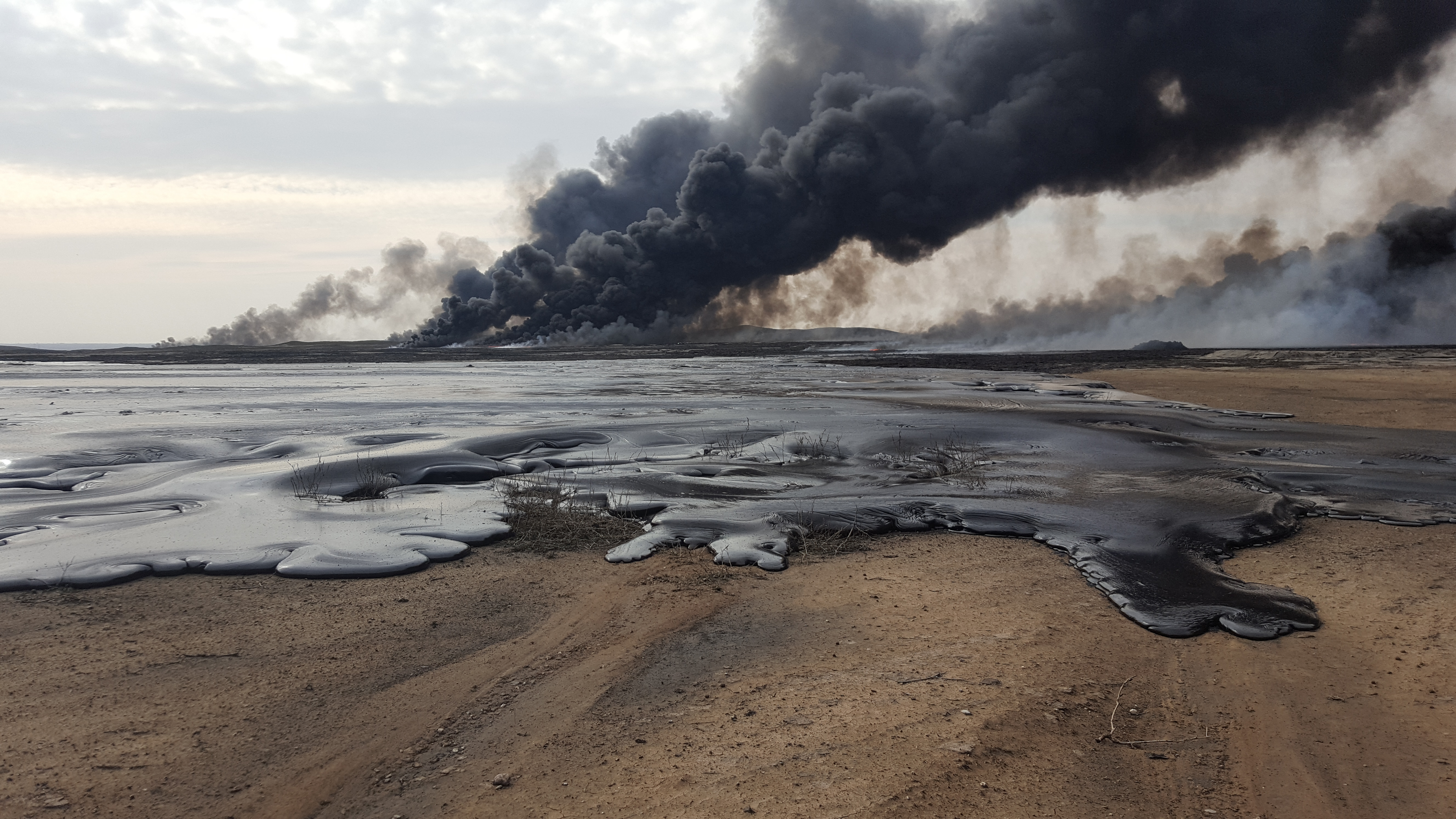Since 2009, PAX has been working to document the environmental impact of new and ongoing conflicts, and to build better responses in order to reduce threats to public health and environmental risks for civilians.
The documentation of environmental hazards in both conflict and post-conflict settings is often minimal due to security constraints. Unexploded bombs, explosive residues, radiation, and attacks on industrial sites where hazardous substances are stored and processed can pose risks to communities long after the conflict they have lived through are over. At the same time, destruction of natural resources in the course of military actions lead to disruption of ecosystems and undermine communities’ resilience to climate change.
To better understand the breadth of the environmental dimensions of armed conflicts and build visibility to this ‘silent victim of war’, PAX has developed a methodology using open-source investigation and satellite analysis that facilities research into this topic. Through documentation and monitoring, and collaboration with local partners, PAX has been documenting such instances of conflict-linked environmental damage in a number of conflict-affected countries, including Iraq, Syria, Ukraine, Gaza and South Sudan.
The findings and recommendations are incorporated in PAX’ research-based advocacy on local, regional and multilateral levels, including in UN and EU platforms, where it aims to set norms around the link between environmental degradation, climate change and armed conflict, which would lead to better protection of the environment and people depending on it.
PAX’s received the UN Environment/UNOCHA Green Star Award in 2017 for the work in environmental emergencies. In 2023, PAX was jointly awarded the Al Moumin Award for Thought Leadership in Environmental Peacebuilding by the Environmental Peacebuilding Association (EnPAX).
Research
PAX’s work on conflict, disarmament and environmental issues started in 2009 with its work on depleted uranium weapons in Iraq. In 2012, together with the International Campaign to Ban Uranium Weapons (ICBUW), PAX co-founded the Toxic Remnants of War Network, actively engaging with States, humanitarian organizations and legal experts to improve responses to conflict pollution and strengthen international law and policy making on protection of the environment in armed conflict. Since then, PAX has been undertaking assessments of environmental problems, increasing visibility and raising awareness of environmental threats during conflicts in order to help first responders and residents in (post-)conflict zones.
PAX produced numerous reports on climate and environmental impacts on conflict-affected countries, including:
- Documentation of climate, natural hazards and risks to South Sudan’s oil infrastructure: “Toxic Floods?” (2023).
- In-depth scientific study on conflict-linked deforestation and potential climate impacts in Syria: “Axed and Burned” (2023).
- Reports on conflict-linked oil pollution in Yemen (“Leaking Ghost Tankers: Pollution in the Port of Aden”, 2022), Iraq (“Living under a Black Sky”, 2017), and Syria (“A River of Death?”, 2020; “Scorched Earth and Charred Lives”, 2016).
- Studies on climate and conflict impacts on pastoralists population in Syria (”We fear more war, we fear more drought”, 2022; “War, waste and polluted pastures”, 2021)
- Analysis of growing water insecurity in Iraq (Iraq’s Waning Water Resources in 2021).
- Environment and Conflict Alerts on burned lands in Iraq (2020) and on environmental harm from the use of explosive weapons in Gaza (2021) and in Syria (2015).
- Reports on impact and implications of the use of depleted in Iraq (“Laid to Waste”, 2014; “In a state of uncertainty”, 2013) and elsewhere (“Hazard Aware”, 2012).
Conflict-related environmental damage in Ukraine
Since the beginning of Russia’s full-scale invasion of Ukraine, PAX has been actively engaged on the topic of the conflict-related impact on the environment in Ukraine, conducting research and documentation of environmental damage, as well as international advocacy surrounding those efforts. The work builds on previous open-source environmental assessments that PAX has been doing in Donbas since 2017.
In the course of the past year, PAX produced a number of reports dedicated to the topic of environmental and health risks stemming from the ongoing war, including the report on the initial assessment of the toxic toll of Russia’s invasion, and on risks and impacts from attacks on Ukraine’s energy infrastructure, agro-industrial sites, oil and gas infrastructure and the destruction of the Kakhovka dam. Together with other partner organisations, PAX presented a ten-step plan for the international community to address the environmental impact of the war in Ukraine.
Advocacy
The objective of PAX’s work on the topic of conflict, climate and the environment is to help prevent, minimise and mitigate the environmental damage, as well as to ensure accountability for it. PAX is actively working with humanitarian and UN organizations to address conflict-related environmental issues in humanitarian response work. PAX representatives also spoke several times at the UN, including to the Security Council, and provided input to numerous international discussions on the topic of environmental degradation, climate crisis and conflict. Together with partners, PAX also raises attention for the UN International Day for Protection of the Environment in Relation to Armed Conflicts on November 6. In the past year PAX produced joint case-studies, such as the Witnessing the Environmental Impacts of War and an animation explaining the topics.
PAX has also used analysis and environment and conflict data to inform and adapt engagements and programming. This includes publications for the International Committee of the Red Cross (ICRC) on data-driven environmental decision-making and action in armed conflict, as well as on data use for strengthening accountability for environmental damages as a result of military actions.
PAX has repeatedly coordinated joint input by civil society organisations to the climate-related topics of the UN Environmental Assembly (UNEA), including in 2023 on the topic of the triple planetary crisis of climate change, pollution and biodiversity loss, as well as other calls to action to the international community to take bold actions before, during and after armed conflicts to protect people and the environment.
Trainings
Building capacity for local partners is part of our work to support environmental investigations in conflicts-affected areas and to strengthen accountability. Therefore, PAX is providing trainings on the use of remote sensing and open-source investigations on environmental and climate issues for local groups and individuals interested in these topics. Current training projects are ongoing in Syria and Iraq.
Contact
Wim Zwijnenburg, Programme Leader Humanitarian Disarmament, zwijnenburg@paxforpeace.nl
- Center for Environmental Initiatives “Ecoaction”
- Environment, Climate, Conflict, and Peace (ECCP) Community of Practice (Geneva Peacebuilding Platform)
- International Network on Explosive Weapons
- Humat Dijlah
- Norwegian People's Aid
- Planetary Security Initiative
- Syrians for Truth and Justice
- UN Environment Program
- Zoi Environmental Network: Disasters and Conflict




